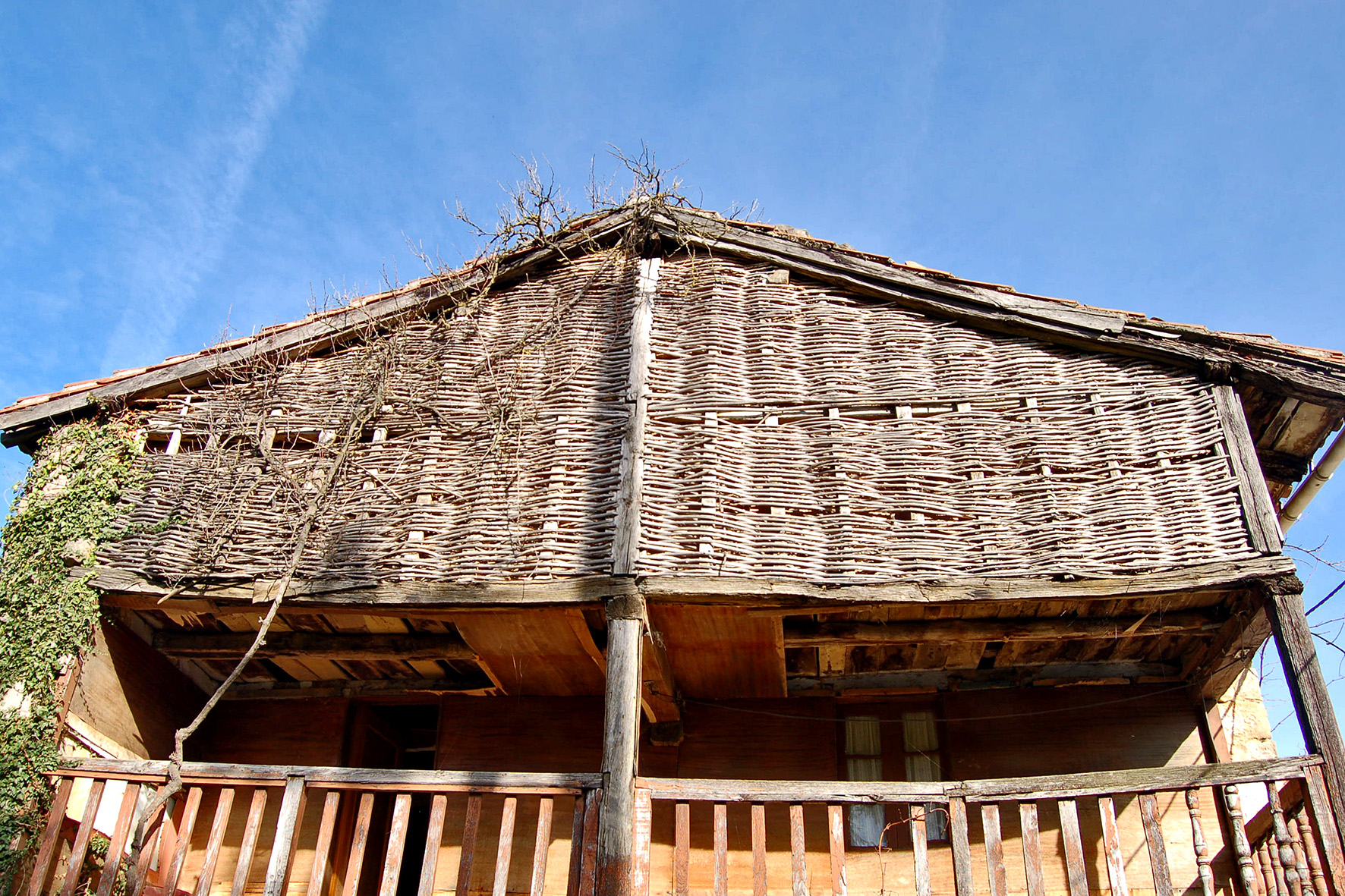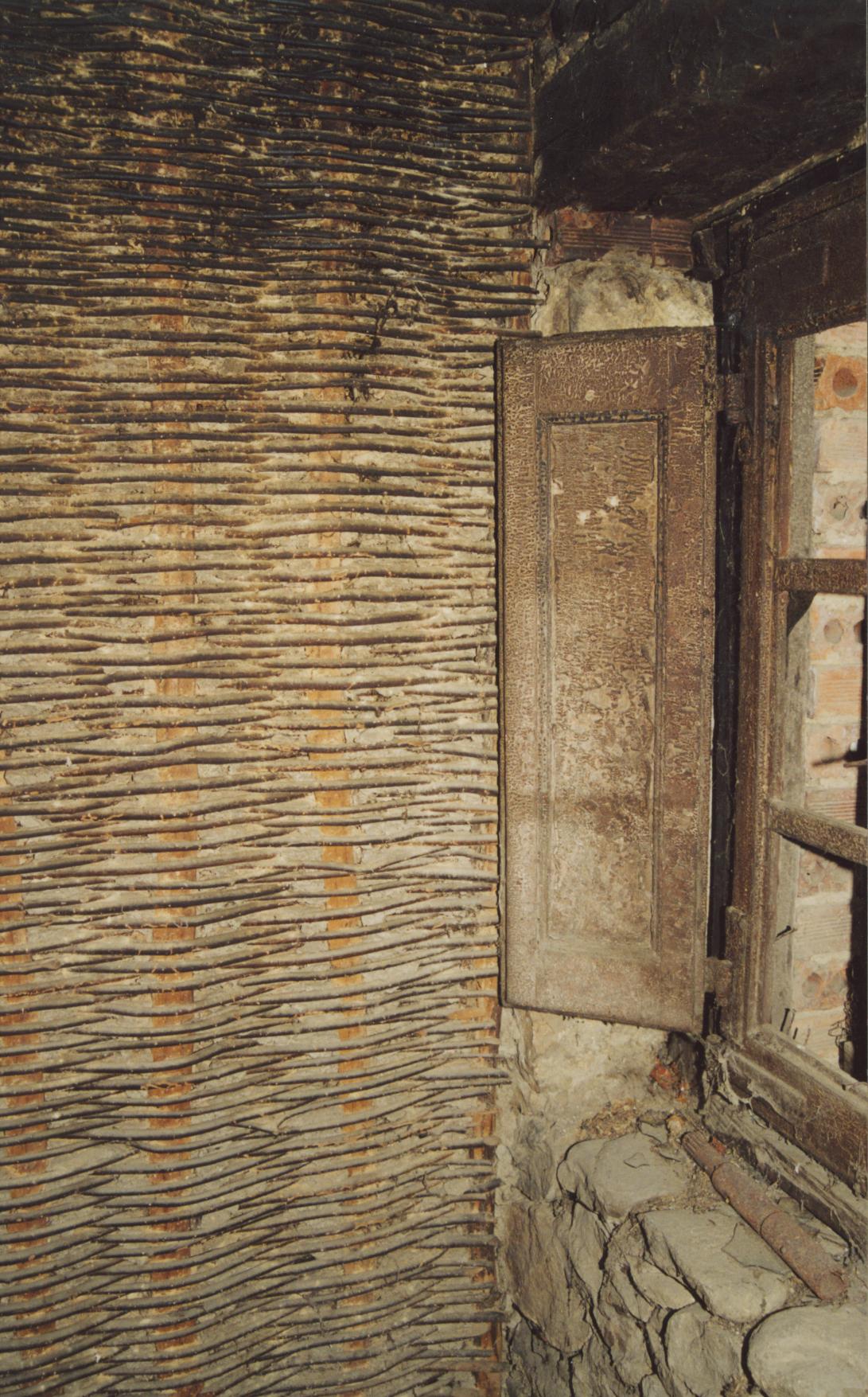Basque ethnography at a glance

Wattle shielding. Valley of Carranza (Bizkaia), 2010. Miguel Sabino Díaz.
Bardanasca, and also bardanasco, is the name given to wattle in the Valley of Carranza (Bizkaia). It is an ancient building material for making walls and fences, consisting of rods interlaced with twigs and branches. Documented as early as the Middle Ages and defines in former Ordinances, the use of this construction method was extended across certain areas of the Basque Country.
In Carranza wattle has been used mainly for interior partition walls, and to a lesser extent as an outer covering of buildings featuring top-floor curtain walls on the main facade. It was installed in some balconies during the autumn to keep the weather out and prevent the falling of the fruits of the harvest stored there to dry, chiefly chestnuts. It was likewise used for shielding of auxiliary dwellings.

Wattle partition wall. Valley of Carranza (Bizkaia), 2003. Miguel Sabino Díaz.
Small upright timber rods, locally known as talonchas or celonchas, were employed in the making of the wooden lattice. Chestnut or oak wood rods carved with the axe were called trancas. In the south end of the Valley, dominated by the council of La Calera del Prado, hazel sticks were named jitones.
Thin branches of hazel called verdugas were then woven between the upright stakes. The hazel branches were harvested at the waning moon, usually in January, so they would not spoil. The branches were interwoven over the railing in the case of balconies.
In the majority of instances, after the framework was finished, it was daubed with mud, sometimes combined with manure from farm animals to avoid it from cracking. Once daubed with the mixture of mud, the wattle was bleached with lime.
Until the mid-twentieth century wattle was present in many houses of the Valley. Its use enabled a reduction in the weight of the structure of the buildings, and as a result, a reduction in construction costs.
Miguel Sabino Díaz – Etniker Bizkaia – Etniker Euskalerria Groups
Translated by Jaione Bilbao – Ethnography Department – Labayru Fundazioa
Reference for further information: House and Family, part of the Ethnographic Atlas of the Basque Country collection.

